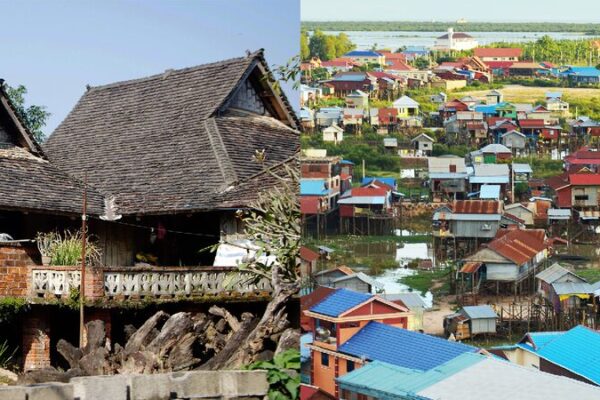Throughout history, China and Cambodia have developed remarkable architectural similarities, especially in their traditional dwellings. From Khmer villages in Cambodia to ethnic groups like the Dong and Dai in China, stilt houses—elevated wooden structures—stand as a testament to human ingenuity in adapting to the environment.
In Cambodia, where the climate is hot and humid with extended rainy seasons and frequent flooding, locals have long built their homes on stilts. This design helps mitigate flood damage while promoting airflow, making living conditions more comfortable despite the heat and humidity.
Similarly, on China’s Yunnan-Guizhou Plateau, stilt dwellings—known as ganlan houses—address the region’s heavy rainfall and damp conditions. These elevated structures not only prevent moisture from seeping into living spaces but also provide room underneath for livestock and storage. The practicality of both architectural styles highlights a shared wisdom in responding to nature’s challenges.
The resemblance between Cambodia’s stilt houses and China’s ganlan homes may also be linked to historical trade routes, such as the Maritime Silk Road. Trade and cultural exchanges helped spread not only goods but also architectural techniques and ways of life, linking the two cultures through shared innovations.
These stilt houses are more than just buildings; they are symbols of resilience and adaptation. They reflect how communities can develop similar solutions to environmental challenges, even when separated by distance. This shared architectural heritage continues to be a fascinating link between China and Cambodia, inspiring a new generation to appreciate the value of cultural exchange and environmental harmony.
Reference(s):
cgtn.com








